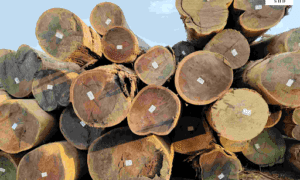Are you tired of expensive car repairs and unexpected breakdowns? Well, buckle up because we’re about to unveil the top 10 essential automobile maintenance tips that every car owner should know! Whether you’re a seasoned driver or just starting out on your vehicular journey, these insider secrets will not only save you time but also keep your beloved automobile in tip-top shape. From simple tasks like checking tire pressure to more advanced techniques like changing oil filters, get ready to take control of your vehicle’s destiny.
Introduction
As a car owner, it’s important to know the basics of automobile maintenance. By staying on top of regular maintenance, you can prevent bigger issues down the road and keep your car running smoothly. Here are some essential maintenance tips every car owner should know.
Check Your Tire Pressure: Checking your tire pressure is something you can do yourself very easily. You’ll need a tire pressure gauge, which you can purchase at any auto parts store. Simply remove the cap from each tire and press the gauge against the valve to get a reading. Each tire should be at the correct pressure, which is typically between 30 and 35 psi for most passenger cars.
Change Your Oil Regularly: One of the most important things you can do for your car is to change the oil regularly. For most cars, this means every 5,000 miles or so. However, it’s always best to consult your owner’s manual to be sure. Dirty oil can cause all sorts of problems for your engine, so it’s important to keep it clean.
Rotate Your Tires: Rotating your tires is another important part of preventive maintenance. This helps to ensure even wear on all four tires, which extends their lifespan. Most mechanics recommend rotating tires every 5,000 miles or so.
Check Your Brakes: It’s also important to regularly check your brakes for wear and tear. If you hear any strange noises when you press the brake pedal, it’s a good idea to have them inspected. You can also check your brake pads for wear, as they tend to wear out over time.
Check Your Fluid Levels: Checking your fluid levels is one of the simplest maintenance tasks you can do at home. Check your oil, transmission fluid, coolant, brake fluid and power steering fluid levels periodically and top them off if necessary.
Replace Wiper Blades: Replacing worn wiper blades should be done every 6 months or so. This helps to ensure clear visibility during rainstorms and other inclement weather. You can purchase wiper blades at any auto parts store and install them yourself in minutes.
Check Lights: Be sure to check all of your external lights regularly and replace any that are starting to fade or burn out. It’s important to ensure all of your headlights, tail lights, turn signals, brake lights and emergency flashers are working properly at all times.
Clean Your Battery Terminals: Be sure to clean the terminals on your car battery periodically with a brush or cleaning cloth. This will help keep it in good condition and ensure optimal performance. Be sure to turn off the car before attempting to clean the terminals.
Check Air Filter: Your air filter should also be checked periodically and changed when necessary. A dirty air filter can inhibit engine performance, so it’s best to keep it clean. You can purchase a new air filter from any auto parts store and install it yourself in minutes.
Inspect Belts & Hoses: Another important maintenance task is to periodically inspect your belts and hoses for signs of wear or cracking. If they look worn, be sure to replace them as soon as possible. This will help prevent further damage down the road.
Regular Oil Change
It is important to change your oil every 3,000 miles or every 3 months, whichever comes first. Over time, oil breaks down and becomes less effective at lubricating your engine. This can lead to serious engine damage.
To change your oil, you will need:
-5 quarts of motor oil
-A new oil filter
-A funnel
-A ratchet and socket set
1. Park your car on a level surface and turn off the engine. Place a large pan under the oil drain plug to catch the used oil.
2. Remove the oil drain plug with the ratchet and socket set. Be careful not to drop the plug into the pan of used oil. Allow the oil to drain for several minutes before replacing the plug.
3. unscrew the old oil filter with an oil filter wrench. Be careful not to touch the filter with your bare hands as it may be hot from the engine heat. Place the new filter on hand tight before using the wrench to tighten it another 1/3 turn.
4. Add 5 quarts of fresh motor oil to the engine through the dipstick tube using a funnel if necessary. Start the engine and let it idle for a minute or two before checking for leaks around the drain plug and filter .
5. Shut off the engine and check the oil level again using the dipstick. Add more oil if necessary and then you are finished.
Tire Pressure
It’s important to keep an eye on your tire pressure. Low tire pressure can lead to a blowout, and high tire pressure can cause your tires to wear down prematurely. You can check your tire pressure with a tire gauge, and you should check it at least once a month. If you notice that your tires are losing air, you should take them to a mechanic to have them checked for leaks.
Battery Care
1. Battery Care
Your car’s battery is one of the most important components of the vehicle. Without a properly functioning battery, your car won’t start and you’ll be stranded. That’s why it’s important to take care of your battery and keep it in good working condition. Here are some tips for taking care of your car battery:
– Check the terminals regularly for corrosion. If you see any corrosion, clean it off with a wire brush or terminal cleaner.
– Keep the battery charged. A dead battery is the most common cause of a car not starting. Make sure to check the level regularly and top off the charge if necessary.
– Don’t let the level get too low. Once the level gets below 12 volts, damage can start to occur. So always keep an eye on the level and recharge when necessary.
By following these simple tips, you can ensure that your car’s battery will last for years to come.
Inspecting Belts and Hoses
Inspecting your vehicle’s belts and hoses is an important part of routine automobile maintenance. Belts and hoses can deteriorate over time due to heat, cold, and engine vibration. Inspecting them regularly can help prevent costly repairs or even a breakdown.
When inspecting belts, look for cracks, fraying, or excessive wear. If you see any of these signs, the belt needs to be replaced. Be sure to check the condition of all belts in your vehicle, including the timing belt, serpentine belt, and drive belts.
Hoses should also be inspected regularly for leaks, cracks, or other damage. If a hose is leaking, it needs to be replaced as soon as possible. It’s also a good idea to check the clamps that secure the hoses to make sure they’re tight and not corroded.
Changing Windshield Wipers
Assuming you have a standard windshield wiper setup, the process for changing your windshield wipers is actually quite simple. You will need to purchase new windshield wipers from an auto parts store – make sure to get the right size for your car. Once you have the new wipers, follow these steps:
1. Lift up on the arm of the old wiper blade to release it from its holding position on the windshield wiper arm.
2. Pull the old wiper blade off of the arm and dispose of it properly.
3. Take the new wiper blade and align it with the opening on the windshield wiper arm.
4. Push down on the new wiper blade until it clicks into place on the arm.
5. Repeat these steps for the other windshield wiper.
And that’s all there is to it! Changing your windshield wipers is a quick and easy process that only requires a few minutes of your time.
Air Filter Maintenance
Much like your home’s HVAC system, your car’s engine needs clean air to function properly. That’s why it’s important to change your car’s air filter on a regular basis. Depending on your driving habits, you should change your air filter every 15,000 to 30,000 miles.
If you live in a dusty area or do a lot of off-roading, you may need to change your air filter more frequently. You can check your car’s owner’s manual for specific recommendations.
Changing your air filter is a fairly simple task that you can do yourself. Just follow the steps in your car’s owner’s manual. If you don’t feel comfortable changing it yourself, you can take it to a mechanic or dealership service department and they can take care of it for you.
Coolant System Flush
If your car is more than a few years old, it’s likely that the coolant system hasn’t been flushed in quite some time. Over time, the coolant can become contaminated with rust, scale, and other debris, which can clog up the system and reduce its efficiency. A coolant system flush is a simple procedure that involves draining the old coolant from the system and replacing it with fresh fluid. This will help to keep your engine running cooler and extend the life of your cooling system components.
Wheel Alignment & Balancing Checkup
It’s important to keep your wheels aligned and balanced. This helps your car drive straight, avoid vibrating, and use less fuel. You can tell if your wheels need alignment if your car pulls to one side when you’re driving. You can tell if your wheels are unbalanced if they vibrate when you’re driving at high speeds. You can have a wheel alignment and balancing checkup done at most auto shops.
Fuel System Cleaning and Servicing
A fuel system service is an important part of routine maintenance for your vehicle. Over time, your fuel system can become clogged with deposits from residuals in the fuel itself. This can lead to decreased performance and fuel economy, as well as starting and stalling issues. A professional fuel system cleaning will remove these deposits and restore proper function to your vehicle.
Many automakers have specific recommendations for when a fuel system service should be performed. However, general guidelines are that these services should be performed every 30,000 miles or so. If you notice any of the above mentioned issues with your vehicle, it may be time for a fuel system service.
If you’re not comfortable performing this type of maintenance yourself, there are many qualified automotive technicians who can perform the work quickly and efficiently. Be sure to use a reputable technician who uses high-quality cleaners and lubricants specifically designed for your vehicle’s fuel system.
Conclusion
All of us need our cars and the importance of regular maintenance cannot be underestimated. We hope that these top 10 car maintenance will help you ensure your vehicle is well taken care of, long-lasting, and performing at its best. Pay attention to basic warning signs such as tires wearing out or fluid levels dropping, address any mechanical problems promptly, and keep up with routine services like oil changes and tune ups. Most importantly never ever neglect timely inspections which can save lots of money – in terms of both repairs cost & possible accidents – for every driver!





























